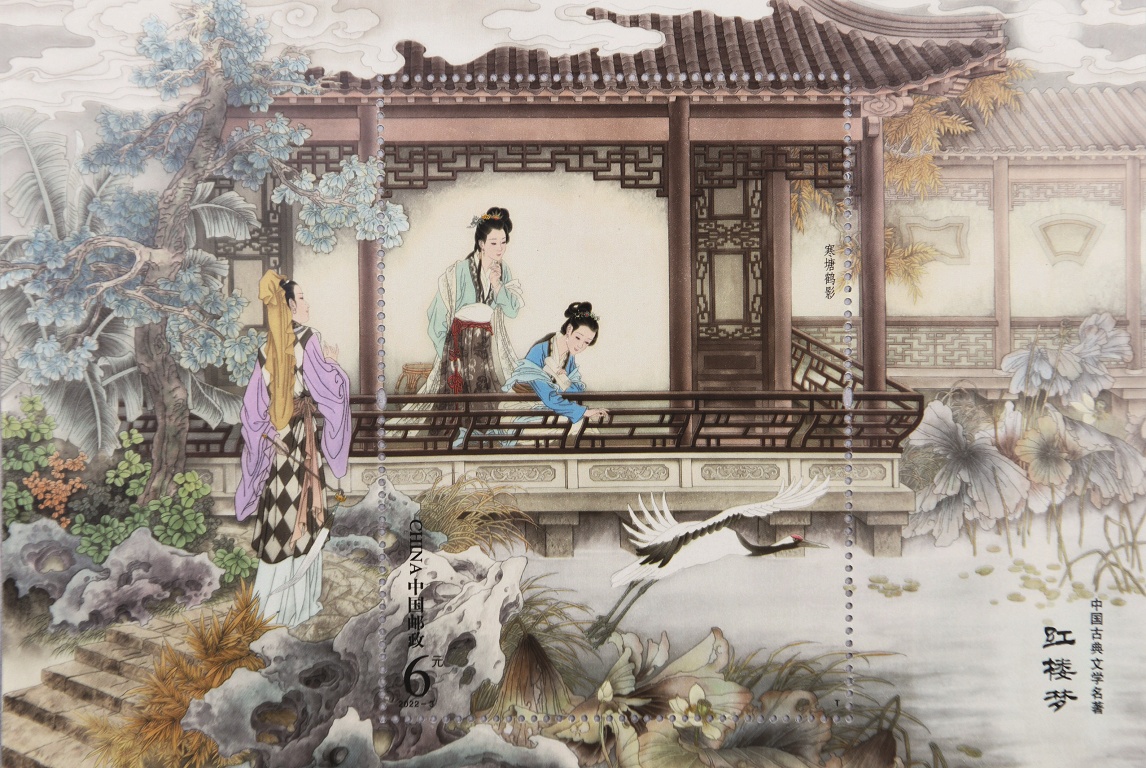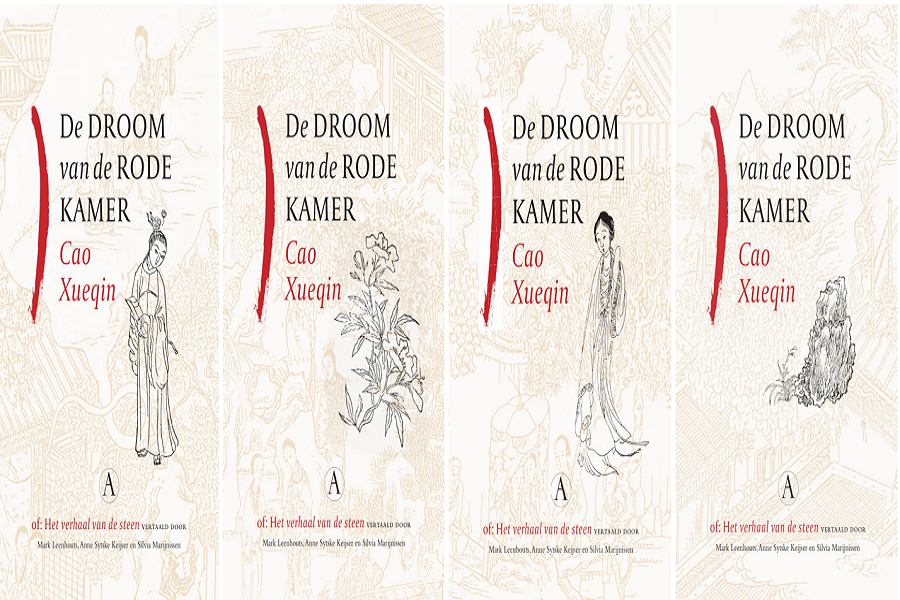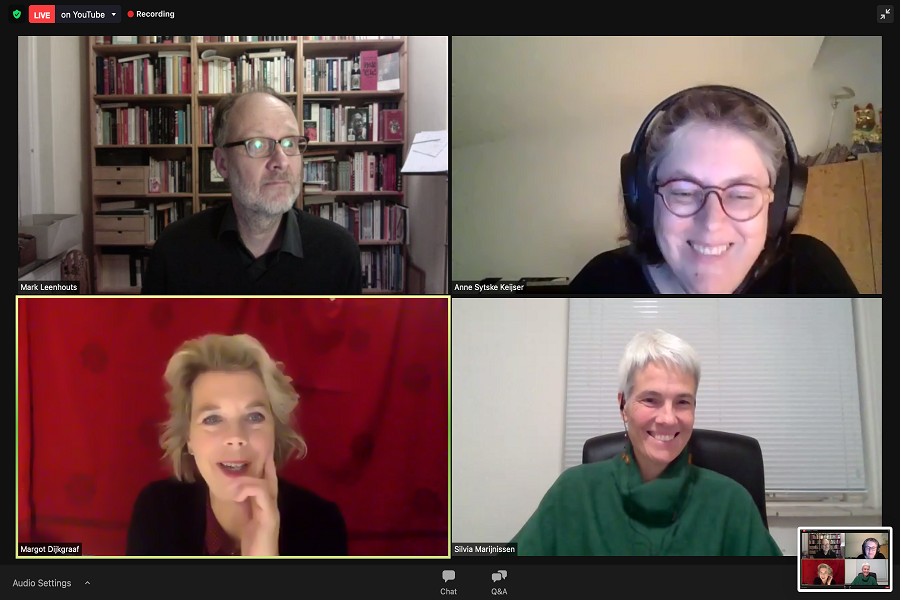Mark Leenhouts: Slow Fire Makes Well-done Translation

At the very first sight, few understand the grave lexicography of the Chinese character“𡈙(yóu).” But Mark Leenhouts is quite familiar with how the pictograph depicting a “a caged bird” on his WeChat profile vividly captures the nature of the translation profession—“a decoy bird.”
“Like a caged bird that serves as a bait to more, we translators help to attract foreign readers,” explained the Dutch sinologist and translator quoting Shuowen Jiezi, the first ancient Chinese dictionary to analyze the structure of characters and explain the rationale behind them. But he took the metaphor even further.
“The cage is also the entirety of all the limitations a translator has to deal with, the limits to his knowledge and skills, especially under the framework of his own civilization,” he said. “I am a decoy for Chinese literature, trying to bring it to Dutch readers with solutions, but also with ideas that exist in the West about China and Chinese literature.”
Leenhouts has been around translating long enough to understand the game, evidenced by his Ph.D. research on Leaving the World to Enter the World: Han Shaogong and Chinese Root-Seeking Literature and My Life As Emperor (Su Tong), Crystal Boys (Pai Hsien-yung) and Fortress Besieged (Qian Zhongshu), just to name a few of his translated works. His recent involvement in Chinese literature is the first full Dutch version of Dream of the Red Chamber, which hit Dutch bookstores last November after 13-year partnership with Anne Sytske Keijser and Silvia Marijnissen.
Slow Roasted
A love triangle across ebb and flow of an influential family, ancient poems by Li Bai and Du Fu, Chinese philosophies of Confucius, Mencius, Lao Tzu and Chuang Tzu, and the multifarious facets of social customs, the Chinese classical novel Dream of the Red Chamber, authored by Cao Xueqin, is known for its extensive observation and narration on the aesthetics, lifestyles, social relations and worldviews of China in the mid-18th century during the Qing Dynasty (1644-1911). When the Dutch publisher Athenaeum had been seeking classics beyond the standard Western circle since 2000, Leenhouts recommended it immediately as one of the “four great classical novels” of Chinese literature, due to its inherent fusion of “beautiful Chinese culture and deep philosophy,” contrasting Journey to the West that is mostly “a Buddhist story,” Water Margin about “bandits with good hearts,” and Romance of the Three Kingdoms which covers “warfare and tactics.”
“The novel is set in a very realistic daily tone,” Leenhouts said. “Western readers can be drawn into it very easily and connect with the lifelike characters.”
“It also came into the journey in search of the root of Chinese literature,” he added while emphasizing he was trying to find out where modern Chinese literature came from and its origins must be key in pinpointing its differences from Western works. “I saw lines from the novel influencing modern Chinese writers’ story creation and felt the influence.”
Facing an immense task demanding a wide range of background knowledge, Leenhouts invited his colleagues Keijser and Marijnissen to join together. The three experienced translators co-founded a Dutch magazine for Chinese literature in 1996 called Het Trage Vuur (Slow Fire), with a punned naming, “let the fire of Chinese literature slowly burn in the hearts of Dutch people.”
Prior to the trio’s efforts since 2008, there was only an abridged Dutch version translated from German in the 1940s, which skipped most of the poems while keeping some obsolete wording. With funding support from Nederlands Letterenfonds, the local Confucius Institute, and the Classic China International Publishing Project, the three had initially planned to complete the work in about eight years. However, the inherent complexity of the novel and the team’s insistence on excellence pushed back the deadline repeatedly until the 2,160-page, four-volume Dutch version, covering all 120 chapters of the original novel, was finally complete.

Covers of the four-volume Dutch version of Dream of the Red Chamber. The first and third covers feature protagonists Jia Baoyu and his beloved Lin Daiyu, respectively. courtesy of Mark Leenhouts.
Linguistic difficulties include vast differences between ancient vernacular and modern Chinese, the intersection of vernacular and classical Chinese, the elegant rhythm of the poetry, the origins of riddles and allusions, and philosophical works related to Confucius, Mencius, Lao Tzu, and Chuang Tzu. Leenhouts always sought to understand the more ambiguously-worded Chinese he happened to encounter. “Xiaodao (saying with a smile) is frequently used in the novel, but it depends on the context as to whether it’s to relieve embarrassment or tell a joke. Considering the possibilities, sometimes we have to add an extra half a sentence to help Dutch people understand people’s interactions from another time in another culture.”
Also, the comprehensive content covering poetry, painting, medicine, utensils, food, tea, and gardens, among others, demanded laborious research with the help of reference works and the Asian Library at Leiden University. Nearly 30 major characters and hundreds of minor ones further added to the complication of the work. A telling choice was to keep all the masters’ names in Chinese, while servants’ names were translated into Dutch because “they received special names after entering the household.” The name of Xiren (literally, “invading fragrance”), the principle maid and unofficial concubine of the main character Jia Baoyu, for example, was inspired by a line of classical poetry that goes, “In an enclosed room, the fragrance of the flowers invades one’s senses, sending them into raptures over its warmth.” The master Jia named the character after learning that her surname was Hua, meaning “flower,” explained Leenhouts, noting that it took three years to find a decent Dutch translation of the name.
Limited footnotes are another highlight of the Dutch version to keep the reading fluency, hence a welcome to general readers. “We had to make choices as translators,” Leenhouts admitted, emphasizing that readers tend to be less concerned with literary allusions and often more eager to flip the page. “For many readers, it will be their first connection to the novel,” he said. “I usually want to just let them read it first.”
“If they want to veer off on other things, they can flip back at any time. We enclosed, for example, a character relationship chart with all the names,” he added with some trade-offs.
To maintain a consistent translation style, the novel was divided into different parts, each containing six to seven chapters. After one translator finished a section, the next would read and revise it before passing it to the third translator for further revision. They would also stop after finishing 15 to 20 chapters to discuss prominent problems. At the end of the entire project, Leenhouts read through all of it again several times to make final revisions that echoed the team’s panoramic concerns.
But struggling to translate the original tone of natural or daily speeches into appropriate Dutch was one of their splits after the co-translators got more familiar with the engaging dialogue of Dream of the Red Chamber which brings the characters to life. For instance, it was not easy to reach consensus on how to translate the phrasing from a 12-year-old maid without any education versus words from Jia Zheng, Jia Baoyu’s father and a stern disciplinarian and Confucian scholar.
“All three pairs of eyes scoured over the whole book, but more people didn’t necessarily make things go quicker,” Leenhouts chuckled. “It probably slowed things down significantly. We met to discuss and debate too. That was a really interesting and instructive part of the whole process. We learned a lot from each other.”

A screenshot from the online launch of the first full Dutch version of Dream of the Red Chamber on December 2, 2021, involving a discussion between the three co-translators—Mark Leenhouts (top left), Anne Sytske Keijser (top right) and Silvia Marijnissen (bottom right)—and moderator Margot Dijkgraaf, a critic of Dutch literature. courtesy of Mark Leenhouts
Timeless Legacy
“Cao Xueqin’s Chinese has become delicious, sparkling Dutch,” wrote scholar Henk Propper in the Dutch newspaper De Volkskrant, raving about the translators’ efforts after publication. The first print sold out around Christmas last year, with lucky readers racing each other to finish the novel. “Online, people are posting ‘I’m already on Part Two, where are you?’... ‘I’m in Part Three now!’” Leenhouts grinned.
Even though average Dutch readers don’t know much about traditional Chinese culture, reading the novel can still build an emotional connection. “When you really dive into it, you can feel it’s also very humane,” Leenhouts said. One of the more appealing aspects of Dream of the Red Chamber for Dutch readers is the Buddhist and Taoist idea of leaving behind past regret and facing up to present realities with a true heart, contrasting the exotic nobility of the main characters. “Later in the story, you witness how Jia Baoyu emerged from an awakening or reflection on life to rediscover who he is and what he wants,” he explained. “Previously he was an unserious person, playing around with girls most of the time. But eventually, he became much more tranquil and started realizing that fulfilling immediate desires doesn’t make you happy.” The awakening begins where the novel ends. Jia enters a fairyland after experiencing the decline of his aristocratic family and parting, in life and death, with Jinling’s 12 beauties, his female relatives, servants, and friends.
From a literary perspective, the full Dutch translation can also help reduce stereotypes and promote a far more diversified landscape of world literature. Out of habit, Dutch people sometimes have stubborn mindsets about Chinese books. “It sounds interesting, but it would probably be hard for me to understand,” Leenhouts said, mimicking a potential reader. “But this book is going to make Dutch people feel like Chinese literature isn’t so strange and different. Understanding it better will facilitate bridging of different cultural circles and even questioning the dominant Western standards of world literature.”
“But if you keep nagging people to read more Chinese literature, you just come off like a very strict professor,” he said half-jokingly. “I prefer that people get inspired by my choice to explore a different form of writing through translation to probe life more indirectly. It’s a labor of love.”